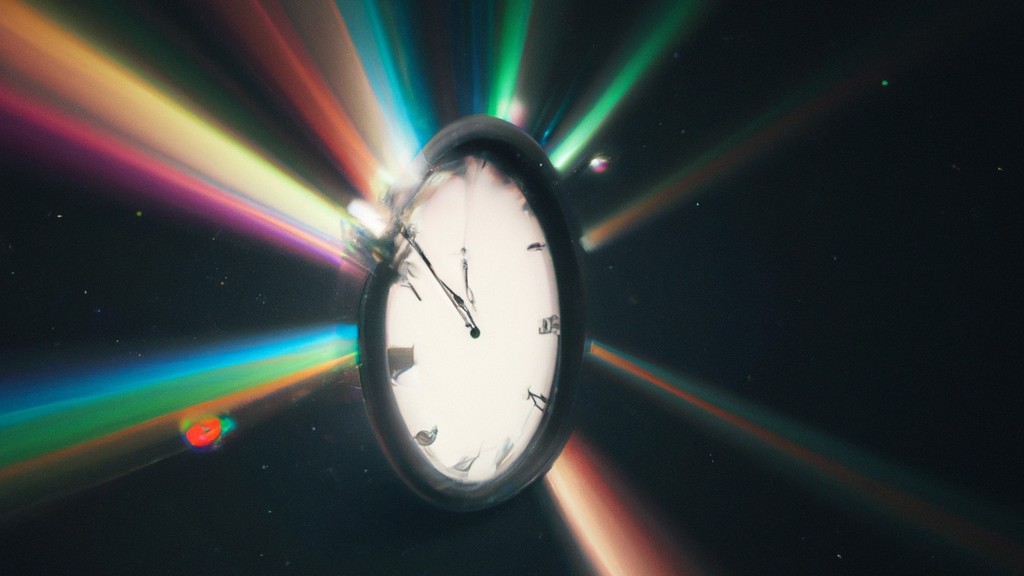
In a first, scientists have shown that they can send light through "slits" in time.
The new experiment is a twist on a 220-year-old demonstration, in which light shines through two slits in a screen to create a unique diffraction pattern across space, where the peaks and troughs of the light wave add up or cancel out. In the new experiment, researchers created a similar pattern in time, essentially changing the color of an ultrabrief laser pulse.
The findings pave the way for advances in analog computers that manipulate data imprinted on beams of light instead of digital bits - it might even make such computers "learn" from the data. They also deepen our understanding of the fundamental nature of light and its interactions with materials.
For the new study, described April 3 in the journal Nature Physics, the researchers used indium tin oxide (ITO), the material found in most phone screens. Scientists already knew ITO could change from transparent to reflective in response to light, but the researchers found it occurs much faster than previously thought, in less than 10 femtoseconds (10 millionths of a billionth of a second).
"This was a very big surprise and at the beginning it was something that we couldn’t explain," study lead author Riccardo Sapienza, a physicist at the Imperial College London, told Live Science. Eventually, the researchers figured out why the reaction happened so fast by scrutinizing the theory of how the electrons in ITO respond to incident light. "But it took us a long time to understand it."
Time swapping in for space
English scientist Thomas Young first demonstrated light's wave-like nature using the now classic "double-slit" experiment in 1801. As light shines on a screen with two slits, the waves change direction, so that waves fanning out from one slit overlap with the waves coming through the other. The peaks and troughs of these waves either add up or cancel out, creating bright and dark fringes, called an interference pattern.
In the new study, Sapienza and colleagues recreated such an interference pattern in time by shining a "pump" laser pulse at a screen coated in ITO. While the ITO was initially transparent, the light from the laser changed the properties of the electrons within the material so that the ITO reflected light like a mirror. A subsequent "probe" laser beam hitting the ITO screen would then see this temporary change in optical properties as a slit in time just a few hundred femtoseconds long. Using a second pump laser pulse made the material behave as if it had two slits in time, an analog of light passing through spatial double slits.
Whereas passing through conventional spatial slits causes light to change direction and fan out, as the light passed through these twin "time slits," it changed in frequency, which is inversely related to its wavelength. It is the wavelength of visible light that determines its color.
In the new experiment, the interference pattern showed up as fringes, or additional peaks in the frequency spectra, which are graphs of the measured light intensity at different frequencies. Just like altering the distance between spatial slits changes the resulting interference pattern, the lag between the time slits dictates the spacing of the interference fringes in the frequency spectra. And the number of fringes in these interference patterns that are visible before their amplitude decreases to the level of background noise reveals how quickly the ITO properties are changing; materials with slower responses yield fewer detectable interference fringes.
This isn't the first time that scientists have figured out how to manipulate light across time, rather than space. For instance, scientists at Google say their quantum computer "Sycamore" created a time crystal, a new phase of matter that changes periodically in time, as opposed to atoms being arranged in a periodic pattern across space.
Andrea Alù, a physicist at The City University of New York who was not involved with these experiments but has done separate experiments that created reflections of light in time, described it as yet another“neat demonstration” of how time and space can be interchangeable..
"The most remarkable aspect of the experiment is that it demonstrates how we can switch the permittivity [which defines how much a material transmits or reflects light] of this material (ITO) very fast, and by a significant amount," Alù told Live Science via email. "This confirms that this material can be an ideal candidate for the demonstration of time reflections and time crystals."
The researchers hope to use these phenomena to create metamaterials, or structures designed to alter the path of light in specific and often sophisticated ways.
So far these metamaterials have been static, meaning changing how the metamaterial affects light’s path requires using a whole new metamaterial structure — a new analog computer for each different type of calculation, for instance, Sapienza said.
"Now we have a material we can reconfigure, which means we can use it for more than one purpose," said Sapienza. He added that such technology could enable neuromorphic computing that mimics the brain.







